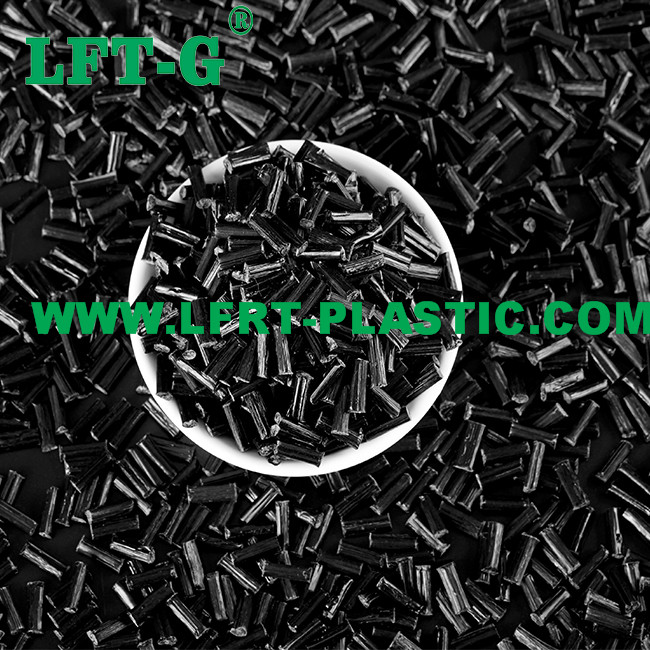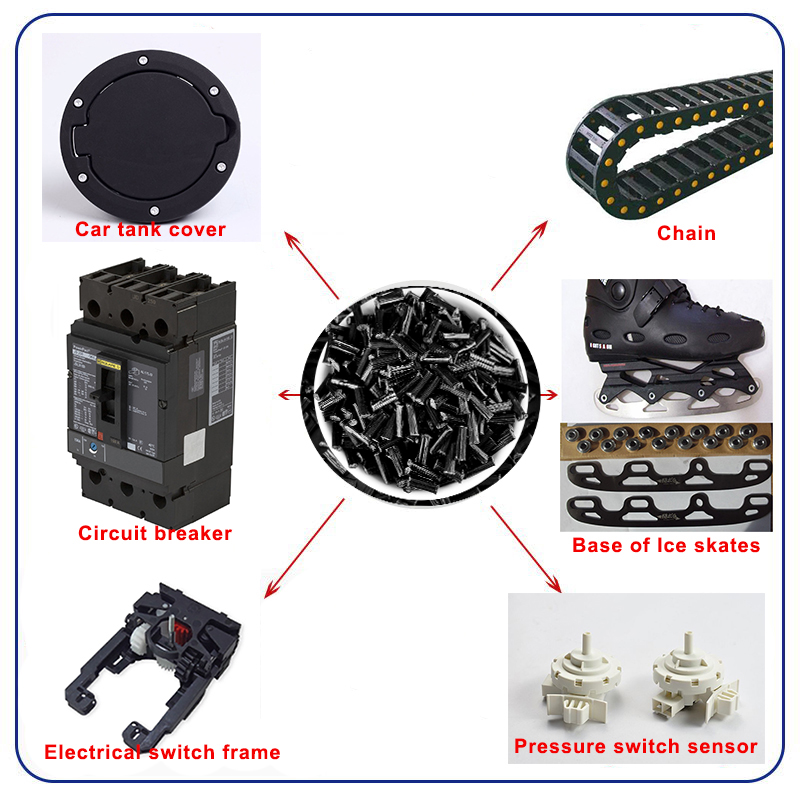oggetto numero.:
PPS-NA-LCFPagamento:
T/T or L/C (other payment ways also can be diorigine del prodotto:
Xiamen, ChinaColore:
Original color (also can be customized)porto di spedizione:
Xiamen, ChinaPPS Informazioni
La densità relativa del solfuro di polifenilene è 1,36, la resina è polvere bianca o particella, dura e fragile, alta cristallinità, forte viscosità di fusione.
Il solfuro di polifenilene ha due tipi di massa molecolare, massa molecolare bassa e massa molecolare alta.
A causa dell'elevato valore del flusso di fusione, è difficile dirigere lo stampaggio, quindi oltre alla spruzzatura, altri metodi nello stampaggio dovrebbero passare attraverso un certo grado di reticolazione e una certa quantità di fibra di vetro o riempitivo inorganico utilizzato per lo stampaggio a iniezione, stampaggio ed estrusione.
Il solfuro di polifenilene di qualità polimerica non necessita di reticolazione, può essere utilizzato direttamente nella lavorazione di prodotti in plastica.

PPS has a symmetrical rigid backbone and is part of a crystalline polymer consisting of repeated parapplacement of benzene rings and sulfur atoms.
PPS is a special engineering plastic with high performance, high melting point up to 280℃, which can replace metal. It is located at the top of the polymer performance pyramid.
Therefore, based on the excellent performance of PPS resin, make it meet the requirements of harsh engineering plastic projects for materials.
PPS Characteristics
(1) High performance PPS resin is a kind of crystalline polymer with high hardness. Its crystal content is about 65%. The crystallization speed is fast, the fluidity is good, the forming cycle is short.
(2) Excellent heat resistance. The melting point can reach 275~291℃, the thermal deformation temperature is 135℃, and the thermal deformation temperature of glass fiber after strengthening can reach 260℃. In air and nitrogen, the initial and weakening temperature of polyphenylene sulfide is about 400 ° C, decomposing in air at 700 ° C, and still retaining 40% of its weight in inert gases at 1000 ° C. Long-term use temperature of 200~240℃, gas barrier thermal resistance and long-term continuous use of thermal stability is better than all the current engineering plastics.
(3) It has good mechanical properties. It has extremely high rigidity, high surface hardness, and has excellent creep resistance, fatigue resistance and wear resistance. Its wear resistance can be greatly improved by filling fluorine resin and carbon fiber lubricant.
(4) Excellent corrosion resistance and chemical resistance. In addition to strong oxidizing acids (such as concentrated sulfuric acid, nitric acid, etc.), but also can withstand the corrosion of other acids, bases and salts, insoluble in any organic solvent below 200℃, its corrosion resistance is almost equivalent to PTFE. In addition, PPS also has good weather and radiation resistance, and its performance will not be affected by multiple strong ultraviolet and Y-ray irradiation and neutron radiation.
(5) with small water absorption (only 0.008%) and oil absorption rate. Smaller molding shrinkage and linear expansion coefficient, the product size stability, small deformation, even in some wet, oily corrosive gas environment, still can maintain dimensional stability, so it can be used for precision molding.
(6) Excellent electrical performance. High performance PPS resin at high temperature, high humidity volume resistivity changes very little, its dielectric constant with temperature and frequency changes very little, coupled with low content of ionic impurities, impregnated in 260℃ solder tank, so enough to withstand the surface welding of electronic components of the thermal impact, suitable for the electrical properties of the products have high requirements. It has high resistivity and low dielectric properties.
(7) High performance PPS resin melt viscosity is very low, good fluidity. It is easy to contact with glass fiber wetting, so it is easy to fill. The glass fiber or glass fibre-inorganic filler prepared by it is used to enhance the injection molding granular material, which has high impact resistance, bending resistance and ductility.
(8) High performance PPS resin on glass, aluminum, stainless steel bonding strength is very high. The bonding strength of glass is even greater than the bonding force of glass.

PPS Application
As engineering plastics, PPS molding materials have many excellent properties, can replace metal, heat curing resin, etc., so it is widely used in various fields.
(1) The application of automobile parts
Automotive parts are the most widely used field of PPS in the future. As shown in Figure 2, PPS is used in electric drive unit components. Because PPS in addition to outstanding continuous heat resistance, drug resistance (gasoline, oil, etc.) and other high performance, but also because it can improve production efficiency (injection molding), so that the cost is greatly reduced.
In addition to replacing the metal parts and phenolic resins used in the past, the application of PPS to new purpose components is accelerating. Especially in the engine related machinery as the center of the driving class, braking class, fuel class, lighting class, cooling class parts and control parts of these machines.
(2) Application on residential facilities /OA/ precision equipment
Super hard PPS(40%GF) are commonly used in water-related equipment such as water heater in residential equipment. This is because "super hard PPS(40%GF)" in addition to the heat resistance of PPS, but also has the characteristics of pressure resistance and good toughness. It is gradually replacing metal materials and deformed PPE materials represented by brass.
The "modified PPS(30%GF)" is suitable for precision equipment parts due to its low crystallinity and dimensional accuracy. At the same time, because of its excellent low friction, low wear performance, suitable for sliding characteristics have special needs of the project use, such as gear, bearings, etc.
In the laser copier, printer and other purposes, the use of PPS heat resistant fixed performance, but also conducive to other special types, such as gear or bearing around sliding, conductive, etc.
(3) Applications in electrical/electronic components
In addition to high heat resistance, precision formability and dimensional stability in the SMT process, PPS also has the high flame retardancy of UL-94V-0 without adding flame retardants. For electrical/electronic components represented by connectors, these properties can be called the best forming materials. Mainly use with PPS general characteristics and appropriate formability of glass fiber reinforced/non-reinforced crosslinked PPS and linear PPS low burr type, suitable for sophisticated molding products, such as connectors, etc.
In addition, glass/mineral filled reinforced crosslinked PPS and linear PPS are suitable for optical oscilloscopes where dimensional stability and rigidity are required. PPS, which can be formed by ultra-low pressure, is suitable for sealing of microcoils and electronic components.
(4) Applications in mechanical industry and chemical industry
In recent years, PPS through chemical modification and glass fiber, mineral filler or carbon fiber mixed into composite materials made of finished products in machinery industry and chemical industry is also widely used.
(5) Applications in the field of lithium batteries
Lithium battery refers to the battery containing lithium in the electrochemical system. Due to the relatively active chemical properties of lithium metal, the environmental requirements for its processing are very high, which is also the reason why lithium battery has not been applied on a large scale. With the advent of the information age, micro-electronic technology characterized by small size, light weight, high reliability and fast working speed is developing and growing. At the same time, the requirements for batteries are also increasing. Therefore, lithium batteries have entered the stage of widespread application. And polyphenylene sulfide (PPS) has excellent heat resistance, insulation, electrical properties and other characteristics, and lithium battery field on the material requirements, is the "intimate partner" of lithium battery.
(6) Application in the field of environmental protection
The main emission source of waste gas and dust is steel plant, waste incinerator, thermal power plant, cement plant, carbon black plant and other fields, cement plant can use room temperature dust bag dust removal, but like steel plant, incinerator, electric heating plant produced in these fields of waste gas, dust with high temperature, humidity, corrosion and other problems, which requires dust removal materials with strong high temperature resistance, corrosion resistance and other properties.
Il PPS in fibra ha un'elevata stabilità termica, può essere utilizzato continuamente a 200 ~ 240 ℃, anche dopo essere stato posizionato a 260 ℃ per 1000 ore può comunque mantenere il 60% di forza. La resistenza alla corrosione del PPS è simile a quella del politetrafluoroetilene, che si dice sia il "re delle materie plastiche". In termini di ritardante di fiamma, i prodotti in fibra PPS non sono infiammabili e possono raggiungere lo standard UL-94V-0 senza aggiungere ritardante di fiamma. Pertanto, l'applicazione di prodotti in fibra PPS nei campi di cui sopra può migliorare notevolmente la durata delle apparecchiature per la rimozione della polvere. Tra questi, il prodotto più utilizzato è il sacchetto filtro antipolvere.

Dettagli
| Modale | MOQ | Campione | Pacchetto |
| PPA-NA-LCF30 | 20 kg | Disponibile | 20 kg/borsa |
| Porto di carico | Tempo di trasporto | Colore | Lunghezza |
| Porto di Xiamen | 7-15 giorni dopo la spedizione | Personalizzato | 5~25 mm |